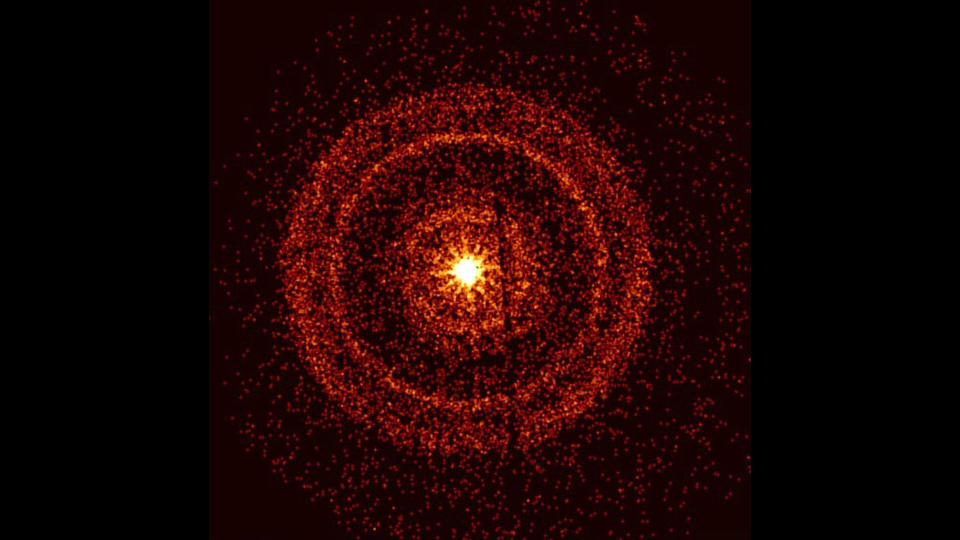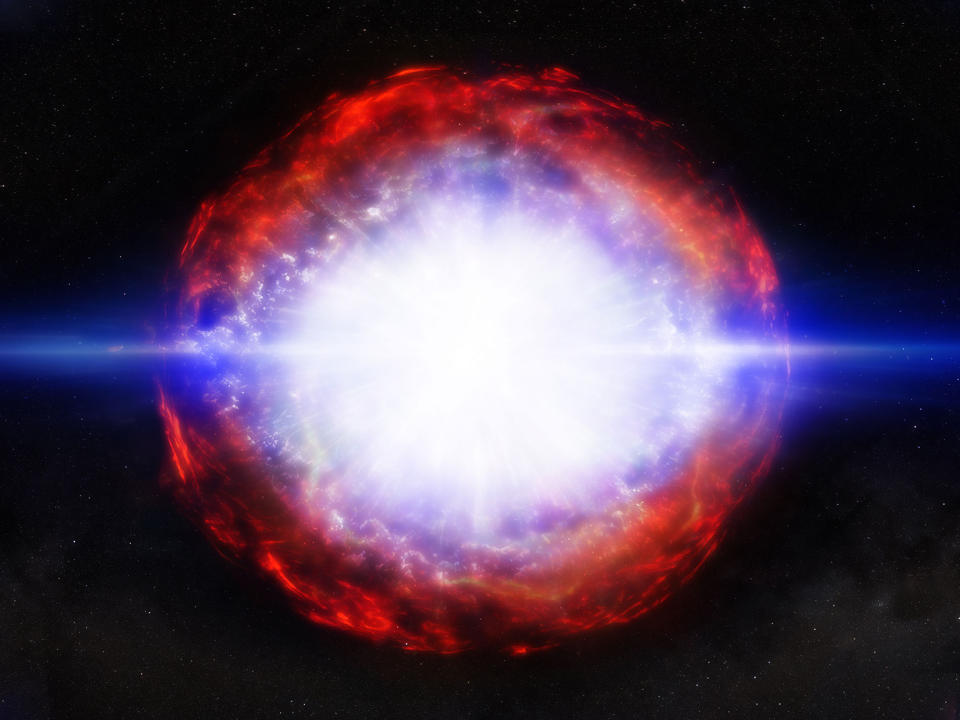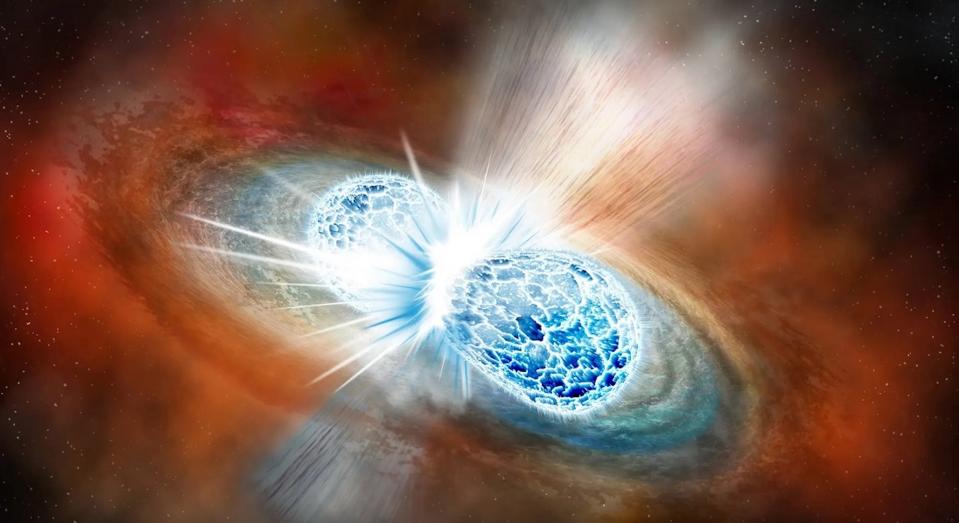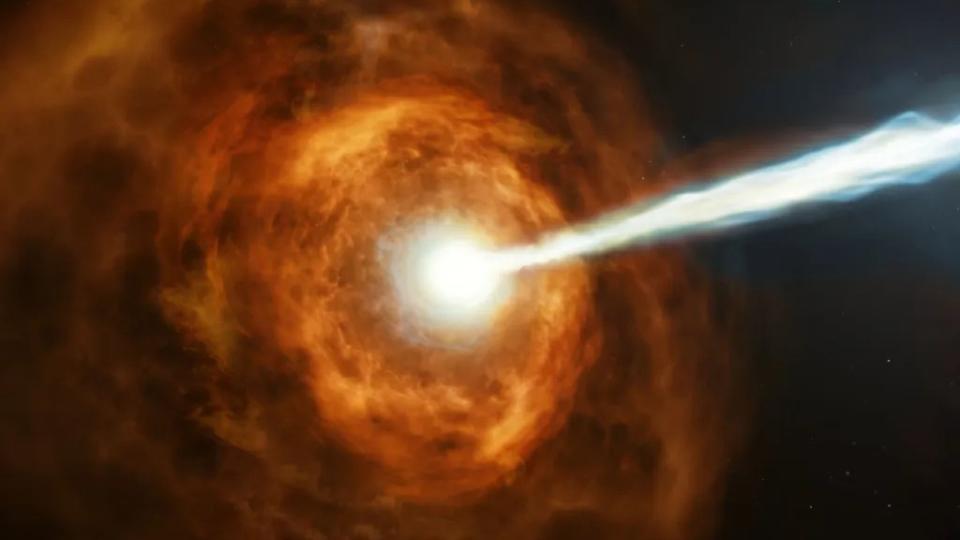Using the James Webb Space Telescope (JWST), scientists have finally unraveled the mysterious origins of “BOAT,” possibly the largest cosmic explosion since the Big Bang.
The brightest gamma-ray burst of all time (hence the acronym Brightest of All Time), a.k.a. BOAT, appears to have been launched by a supernova explosion accompanying the death and collapse of a massive star approximately 2.4 million light-years away. far. This is probably an event that led to the birth of the black hole.
However, by solving this cosmic mystery, the team of astrophysicists revealed another celestial puzzle. This is because traces of heavy elements such as gold and platinum, which would be expected to be found in the vicinity of such a supernova, are nowhere to be found.
“This was an event that Earth only sees once every 10,000 years,” team leader and Northwestern University scientist Peter Blanchard said in a statement. “The event produced some of the highest energy photons ever recorded by satellites designed to detect gamma rays.”
Relating to: The brightest gamma-ray burst ever seen, the largest known explosion since the Big Bang, has a unique jet structure.
“When we confirmed that the GRB formed as a result of the collapse of a massive star, it gave us the opportunity to test a hypothesis about how some of the heaviest elements in the universe are formed,” Blanchard added. “We did not see traces of these heavy elements, indicating that highly energetic GRBs such as BOAT do not produce these elements.”
Scientists did not miss the BOAT
The BOAT, officially designated GRB 221009A, was first spotted on October 9, 2022 and immediately stood out from other GRBs due to its extraordinary nature. Astronomers detected this as an extremely bright flash of high-energy gamma rays, followed by a fading glow in many wavelengths of light.
The strong GRB was first detected by gamma-ray and X-ray telescopes, including NASA’s Fermi Gamma-ray Space Telescope and the Neil Gehrels Swift Observatory. After the initial detection of BOAT, astonished astronomers took action to find its potential source. Convinced that the answer must be there, they pointed their telescopes towards the constellation Sagitta.
“As long as we can detect GRBs, there is no doubt that this GRB is the brightest GRB we have ever witnessed,” said associate professor Wen-fai Fong, one of BOAT’s discoverers. That’s what the physics and astronomy expert and leader of the Fong Group at Northwestern said at the time of the discovery.
But Blanchard and his colleagues were in no rush to chase BOAT.
Instead, they wanted to see BOAT as it evolved and follow it through its later stages. So they trained JWST on the gamma-ray burst, which faded out about six months after it was first detected.

“The GRB was so bright that it obscured any potential supernova signature in the first weeks and months after the explosion,” Blanchard said. “During these times, GRB’s so-called afterglow was similar to a car’s headlights shining directly at you, obscuring your ability to see the car.
“So we had to wait for it to fade significantly to give us a chance to see the supernova.”
Using JWST’s Near Infrared Spectrograph (NIRSpec) instrument, Blanchard and colleagues observed BOAT’s infrared radiation. This revealed signatures of elements such as calcium and oxygen, all of which are characteristic of supernovae.
But what was surprising was that although BOAT was the most powerful cosmic explosion of its kind ever detected, the supernova that created it actually looked pretty average for such an explosive stellar death.
“It’s no brighter than previous supernovae. It looks pretty normal in the context of other supernovae associated with less energetic GRBs,” Blanchard said. “You might expect the same collapsing star that produces a very energetic and bright GRB to also produce a very energetic and bright supernova. But that apparently is not the case. What we have is an extremely bright GRB, but not a normal supernova.”


The team is currently unsure how a “normal” supernova could create an explosion of energy as large as a BOAT.
Team member and University of Utah physics professor Tammoy Laskar thinks the extreme GRB may be a result of the shape and structure of fast near-light jets ejected from collapsing massive stars as they form black holes. If a massive star is spinning rapidly when it collapses, the rays it emits will be narrower, more focused and therefore brighter.
“It’s like focusing the beam of a flashlight on a narrow column instead of a wide beam that covers the entire wall,” Laskar said. “In fact, this was one of the narrowest jets ever seen in a gamma-ray burst, which gives us a clue as to why the afterglow appears so bright.
“There may be other factors that are responsible; this is a question researchers will study in the coming years.”
Moreover, another aspect of this supernova that requires much deeper investigation is not what it has, but what it seems to be missing.
missing elements
The hearts of stars are like stellar furnaces, combining light elements to form increasingly heavier elements. This process creates elements up to iron, but after that even the most massive stars have difficulty fusing heavier elements such as gold and platinum.
For many years, scientists suspected that these relatively heavier elements formed from agglomerations of very dense, dead stars called neutron stars; JWST recently played a key role in helping confirm such a theory.
But researchers also thought that the extreme environments created around supernovae that can eject GRBs could facilitate the “rapid capture” of neutrons, or the “r-process” that forms elements such as gold. The reason for this assumption is that neutron star collisions alone appear to be too rare to create quantities of heavier elements than what pioneering scientists saw in the early universe.


“There is probably another source. It takes a very long time for binary neutron stars to merge. The two stars in a binary system must first explode in order to leave the neutron stars behind. Then it can take billions and billions of years for the two neutrons to form. Blanchard said the stars gradually get closer and eventually “But observations of very old stars show that some parts of the universe were enriched in heavy metals before most binary neutron stars had time to merge.
“This points us to an alternative channel.”
This alternative channel was theorized to be the collapse of a rapidly rotating, massive star; This is the exact type of event that scientists have confirmed started BOAT.
Using JWST, the team was able to peer into the deep layers of this supernova, where elements heavier than iron must have been forged. “The star’s exploding material is opaque at first, so you can only see the outer layers,” Blanchard said. said. “But once it expands and cools, it becomes transparent. Then you can see the photons coming from the inner layer of the supernova. Moreover, different elements absorb and emit photons of different wavelengths depending on their atomic structure, giving each element a unique spectral signature.”
This means that looking at an object’s spectrum can tell astronomers what elements are present.
“When we examined BOAT’s spectrum, we did not find any traces of heavy elements, indicating that extreme events such as GRB 221009A are not primary sources,” Blanchard said. “This is crucial information as we continue to identify where the heaviest elements occur.”


Blanchard also says that not detecting heavy elements around BOAT’s supernova source doesn’t mean scientists should give up studying the GRB channel of heavy element production just yet.
“This does not mean that all GRBs do not produce them, but it is important information as we continue to understand where these heavy elements come from,” he said. “Future observations with JWST will determine whether BOAT’s ‘normal’ cousins produce these elements.”
In addition to learning more about BOAT and confirming its origin with JWST, the team was also able to detect a signature of intense star formation in the galaxy hosting the event. This showed that the star that died giving birth to BOAT may have formed in a different environment than other supernova stars.
One aspect of this galaxy that may help further unlock BOAT’s secrets is the presence of low concentrations of elements heavier than hydrogen or helium, which astronomers call “metals.”
“This is another unique aspect of BOAT that may help explain its properties,” team member and Penn State University graduate student Yijia Li said in a statement.
Related Stories:
– 300 gamma-ray-bursting neutron stars found in a huge mass – and some of them are “spider pulsars”
— Pulsar surprises astronomers with record-breaking gamma rays
— The elusive origins of long gamma-ray bursts may finally be revealed
“We are lucky to live in a time when we have the technology to detect these explosions occurring in the universe,” Blanchard concluded. “It is very exciting to observe a rare astronomical phenomenon like BOAT and try to understand the physics behind this extraordinary event.”
The research was published Friday, April 12, in the journal Nature Astronomy.